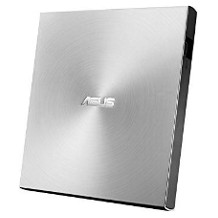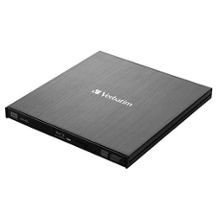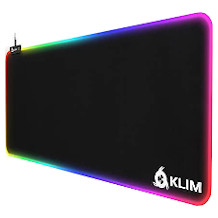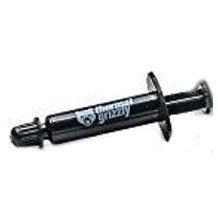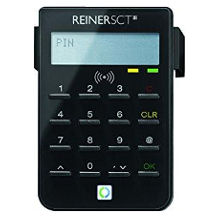PC speaker purchasing advice: how to choose the right product
- What You Need to Know
- PC speakers replace internal speakers and provide a much better sound experience on the computer.
- There are PC speakers for every requirement and every budget.
- An external speaker system is particularly recommended if the user not only works on the PC, but also watches films and videos or plays PC games via the device.
- Multi-channel systems also provide an appealing surround sound at the PC workstation.
What are PC speakers?
Most notebooks are equipped with speakers out of the box. Some desktop computers and all-in-one PCs also have integrated speakers. However, these are often only suitable for warning sounds. As soon as it comes to louder music, game sound effects or films, they reach the end of their performance spectrum. For example, when the cheering from the spectator stands in FIFA 18 turns into a sea noise, this clearly shows the limits of the installed speakers. The solution to this situation is external speaker systems for the computer.
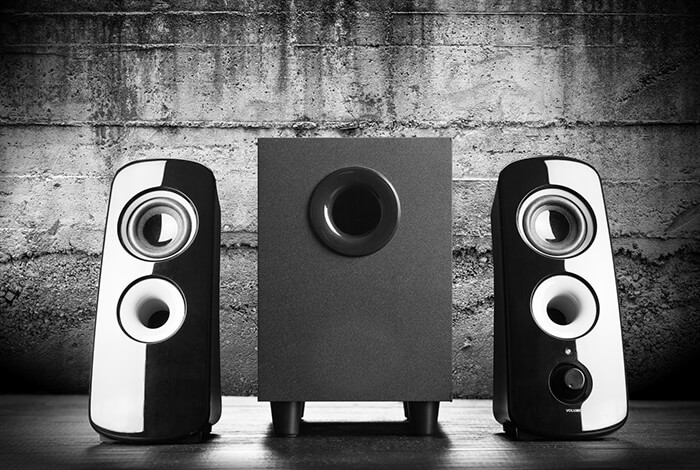
Different types of PC loudspeakers
PC speakers are available in different versions and for different requirements; starting with the simple mono speaker up to complex 5.1. systems that can almost create a home cinema atmosphere. Dolby surround sound systems with a 7.1 system on the computer are particularly sonorous. These produce optimal sound results at a high level.
Simple mono speakers
Compact mono speakers are particularly suitable for mobile devices such as small netbooks, tablets or smartphones. Of course, these models do not offer a bombastic sound experience, but they are perfectly adequate for listening to the new album by your favourite band or watching series. The single speakers are usually connected to the PC or tablet via a 3.5 mm jack cable. They also have features such as a USB connection, lithium-polymer battery or battery operation and the option of adjusting the volume directly on the device.
Pro points
- Can be connected to almost any device
- No special sound card required
- Space-saving
- Inexpensive
- Easy installation & setup
Drawbacks
- No surround sound experience
- Constant energy consumption if left on all the time
- Some models require an additional bass box (subwoofer)
Stereo PC speakers represent the next level among PC speakers. With this type, you can choose between 2.0 and 2.1 systems (with subwoofer).
Flat-panel speakers for the PC
If you have very little space on your desk, you can go for the so-called “flat speakers”! The speakers are no deeper than a TFT screen, but still surprise with good sound. A prerequisite for this, however, is the combination with a subwoofer. Without the bass box, the sound might sound a little “weak on the chest”. The big advantage with flat-panel speakers is undoubtedly their compact design. And if there is not even room for them at the workplace, the user can also mount them on the wall.
Pro points
- Compact design
- Space-saving
- Wall-mounting possible
Drawbacks
- Need additional bass speaker for good sound
5.1. sound systems
Multi-channel systems consisting of five loudspeakers and a subwoofer produce a comprehensive surround sound. These speakers are placed to the right, left and centre of the monitor, as well as to the right and left behind the user or to the side at the same height. This way, the PC user is exposed to sound from all sides and can experience games, films and series as if they were in the cinema.
What does 5.1 mean?
The user recognises multi-channel systems by the number combination such as 2.0, 5.1 or 7.1. The first number indicates how many speakers the system contains. The last number indicates whether a subwoofer is included in addition to the speakers. A 5.1. system therefore consists of 5 speakers and a subwoofer.
A surround decoder distributes the sound optimally to the speakers. This tool is either already integrated in the sound card, included in the loudspeaker set, or the user has to buy it additionally.
For real music, film and game fans, there are now systems that rely on even more speakers – 7.1 or even 8.1. These require special sound cards, which the user must also purchase separately.
Pro points
- Exquisite surround sound experience
- Wide range of settings
- Suitable for music, films and games
Drawbacks
- Price-intensive
- Complex setup and cabling
- A special sound card may be required
Bluetooth speakers
If you are looking for a wireless solution, Bluetooth speakers are a good choice. As the name suggests, these speakers are connected to the computer via short-range Bluetooth radio. Power is supplied by built-in rechargeable batteries or replaceable batteries. These speakers are therefore rather unsuitable for continuous use on a desktop PC. Music fans who mainly play songs via streaming services on mobile devices like to use wireless speakers. They are inexpensive and you can take the music with you into the other room, so to speak. Most models receive the radio signal even at a distance of about 10 metres. With an integrated hands-free function, Bluetooth speakers become a communication tool.
Pro points
- Mobile and portable
- No tangled cables
- Can be used as a hands-free system
Drawbacks
- Power supply via rechargeable batteries or batteries
Other speaker types for the PC
The subwoofer is a loudspeaker that concentrates exclusively on the low tones, i.e. the bass. Since low tones require more resonance space, the subwoofer is somewhat larger than typical PC speakers, with a shoebox size. This is not a bad thing, however, because the human ear has difficulty locating bass tones.
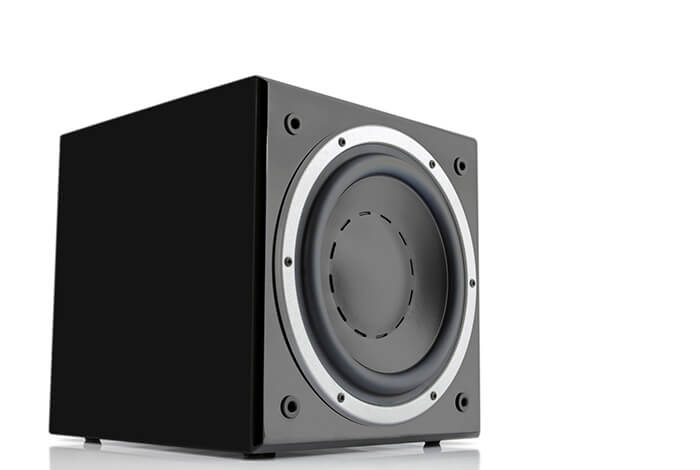
Therefore, the subwoofer does not necessarily have to be placed on the desk. Instead, it can be placed under the desk to save space. In a 2.1. speaker system, the two speakers are usually quite small because the bass is output via the bass speaker.
A special variant of PC loudspeakers is the soundbar, in which several loudspeakers are placed in an elongated “box”. This can be placed in front of or under the PC. Due to the larger resonance chamber, the sound bar even manages without a separate subwoofer. Many sound bars are advertised as being able to simulate surround sound. However, if you want to enjoy an “all-round sound experience”, you will certainly not be satisfied.
How do I place the PC speakers correctly?

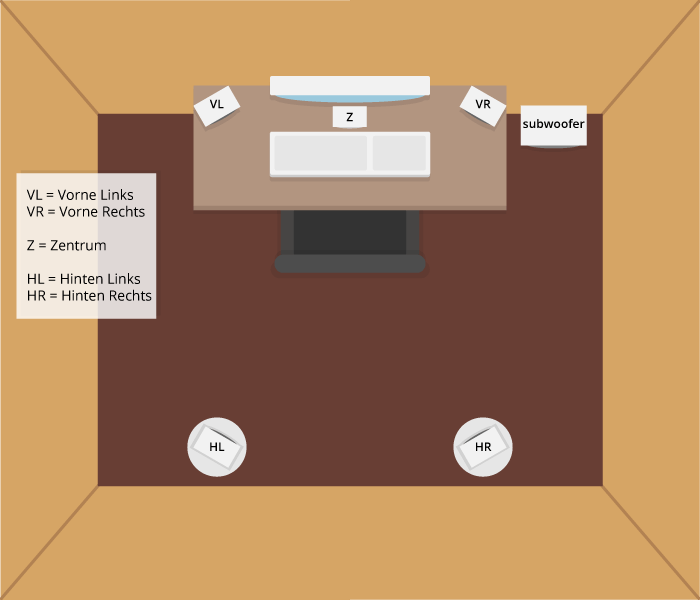
With stereo speakers, it is sufficient to place the two speakers to the left and right of the monitor or display. They may even be mounted on the wall at head height.
In 5.1. systems, one speaker each is placed to the left, right and centre of the screen, while the last two speakers are best placed to the left and right of the user or slightly offset behind him.
The subwoofer can be placed under the desk and thus does not take up important desk space.
What features do PC speakers have?
The following features and performance characteristics are typical of modern PC speakers:
Sound and volume control
Users with very fine hearing will attach importance to precise sound adjustment. For them, PC speakers are recommended that have separate controls for pitch and bass. Of course, a volume control should not be missing either. This should be placed so that it is easy to reach. Preferably at the front of a speaker. Some manufacturers hide the control on the back. This may look nicer, but this position is unfavourable for operation. An alternative is to control the sound and volume with a remote control.
Connections
By default, PC speakers are connected to the sound card or the PC via a jack plug. There are also systems that allow connection via USB cable, but this does not necessarily improve the sound. One combination is mobile speakers that are connected to the sound card via a jack cable and draw their power via a USB cable. In general, you can say that short cables mean better sound quality than long cables. Some models also have a headphone input.
Design & construction
While speakers used to be quite plain – black, small boxes – today they come in numerous designs, with lighting and other gimmicks that make them eye-catchers. If you don’t have much space on your desk, you’ll want a PC speaker that is small and compact.
Accessories
Before buying, it is important to make sure that the right cables, connecting plugs and even a remote control, if necessary, are included in the scope of delivery.
What to look for when buying PC speakers
The most expensive equipment is not always the best choice for the user. Rather, the user’s demands on PC sound are decisive.
Beginners and less frequent users
If you only want to listen to a little music in the background while you work, you don’t have to invest hundreds of euros in a high-end PC speaker system. Compact single speakers or stereo speakers (with or without subwoofer) will do. These are functional, sometimes surprise with a very balanced sound and are reasonably priced. A soundbar can also be a good choice to start with.
For an individual sound experience, however, it is a good idea to use PC speakers with controls for highs and lows to compensate for differences in quality.
Film fans and gamers
For users who want to use the PC speakers to enjoy films in surround sound, a multi-channel system with at least 5 speakers plus subwoofer is recommended. The speakers do require more space and are not quite as quick to set up. Of course, the price is also much higher than that of simple speakers. However, a multi-channel system convinces with brilliant surround sound that makes the heart of a film fan beat faster. Many gamers also attach great importance to surround sound because it allows them to play games even more realistically.
In order to find the right PC speaker system when comparing products, the customer should ask himself a few questions about purpose, features and budget. If there is clarity in these areas, the decision will be much easier:
Purpose
- What do I want to use the PC speakers for? For music or more for movies and games?
Location
- How much space do I have available to set up the speakers?
- How many speakers do I want?
Equipment
- Which device do I want to connect the speakers to? (PC, netbook, notebook, tablet, smartphone?)
- Do I want a stereo or surround sound system?
- Do I need a subwoofer or is a stereo system sufficient?
Costs
What is my budget?
- The following criteria can help you decide on the right model:
Connections
It is best if the speaker system can be connected to the PC via a jack plug. On the one hand, this means that no USB port is occupied by the speaker and, on the other hand, the sound card works with it. With a USB connection, the signal is transmitted digitally and the sound card is bypassed.
If you occasionally want to listen to music on the PC via the headphones, you should choose a model with a corresponding interface.
Control
The volume control should be easy to reach. It is also a plus if the user can adjust bass and treble individually. In this way, the sound of the PC speakers can be optimised.
Power
With a high degree of efficiency, the loudspeaker provides sufficient volume even with a low wattage.
Wired or wireless?
With a wired speaker system, it may be important to some users how long the cables are or whether they are permanently connected to the speakers. This is especially relevant for the setup of the speaker system and whether an extension cable can be added quickly.
In the case of wireless speakers, the user should make sure when buying that the distance between the speakers is not too great when setting them up.
Accessories
To ensure that the PC speakers can be used quickly, all important utensils should be included. In addition to the speakers and the manual, this includes the right cables and, if necessary, a Bluetooth transmitter and remote control with batteries.
Sound card
If you are interested in a multi-channel system, you should definitely check which sound card is required.
Power consumption
Low power consumption is also an important criterion in the purchase decision. An on/off switch should be available in any case.
Active or passive?
As a rule, PC speakers are always active speakers. This means that an amplifier is built into the speakers. For this reason, the speakers need their own power supply. Most models have their own power button. PC boxes that are connected to the computer via USB cable draw their power from the computer.
Wireless speaker systems draw the necessary power from a built-in rechargeable battery or from a battery.
Note: PC speakers can become real power hogs. So always switch off the speakers when not in use!
Speaker performance and quality
When it comes to the performance of a loudspeaker, many technical terms are bandied about in product descriptions: power, RMS, efficiency or resistance. For laymen, it is difficult to interpret the information. Moreover, the buyer has to be careful which numbers in the product description are really relevant. The following section explains the most common terms in more detail:
The wattage
The power of a PC loudspeaker is indicated in the physical unit watt (W). The value describes the energy consumption in a certain period of time. In the context of audio systems, this value refers to the (alternating) current. For once, the saying “a lot helps a lot” is not true when it comes to choosing the right PC loudspeaker. It is rather the interplay of efficiency and power that says something about the sound quality. If the PC loudspeaker has a high efficiency rating, a low power rating is sufficient to obtain good sound.
Efficiency
The efficiency indicates the ratio in which a loudspeaker converts electrical power into acoustic power. In a measuring procedure, it is measured how loud the PC loudspeakers can play at a distance of one metre with a power of one watt. The value is given in decibels (dB). In conjunction with the wattage, this figure gives an indication of the quality of the loudspeaker. If the number is quite high, it means that the speaker efficiently converts electrical power into sound, i.e. it sounds loud with little power consumption.
The rated power handling or RMS
In English-speaking countries, instead of the rated power of a loudspeaker, the sine power is usually given in watts R.M.S. (Root Mean Square). The RMS power corresponds to the nominal power handling or the maximum continuous load that the speaker can reproduce without interruption. Behind this is a complex measuring procedure in which the power of the PC loudspeaker is registered within the relevant frequency range. For loudspeakers, this range is approximately between 20 and 20,000 Hertz (Hz).
The resistance
If the audio signal flows in the form of alternating current through a cable from the amplifier to the loudspeaker, an electrical resistance is created in the circuit. The higher this impedance (= term for alternating current resistance), the more energy is needed to reproduce sounds accurately. The resistance is given in the unit Ohm. It can differ from speaker to speaker. Most PC speakers have a resistance of four ohms, but there are also units with higher resistance.
The PMPO value (peak power)
Some manufacturers indicate the music power of the loudspeaker in the product description with the addition P.M.P.O.. This abbreviation stands for Peak Music Power Output. For loudspeakers, the value indicates the highest peak load that the device can withstand for a short time without being destroyed. Unfortunately, this performance indicator lacks unambiguity. In addition to the above explanation, there are other terms for PMPO in the product texts, for example Peak Momentary Power Output or Pulse Maximum Power Output. The measurement methods are also not standardised. Often the PMPO value is far above the RMS power. However, the PMPO value says nothing about the actual load limit of the loudspeaker. Nevertheless, some manufacturers like to use this figure for marketing reasons and to promote sales in order to attribute a high power value to the loudspeaker. For the purchase decision and the product comparison, however, the figure is uninteresting.

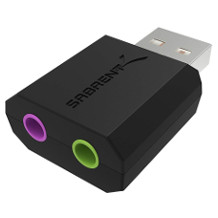

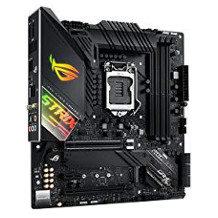
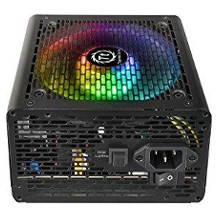
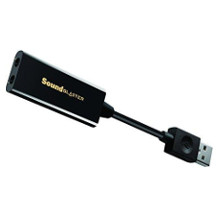
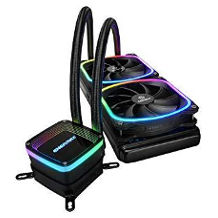
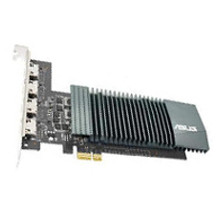
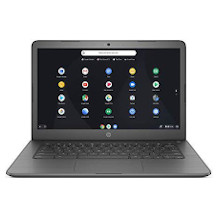
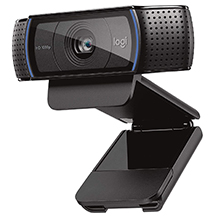
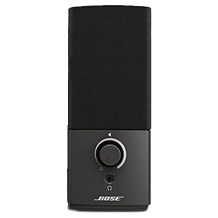
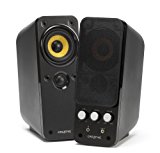
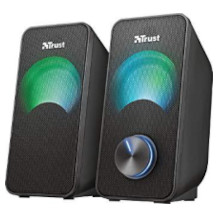
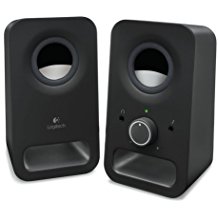
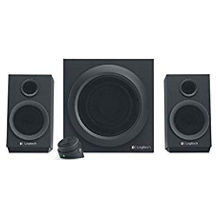
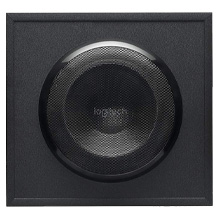
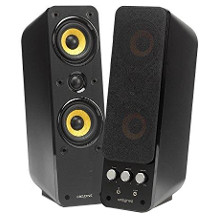
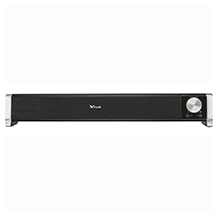
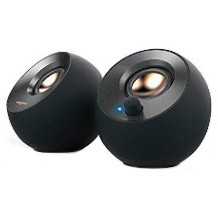
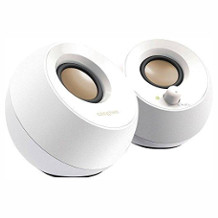
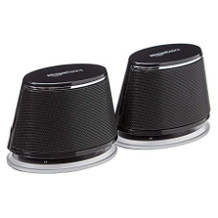
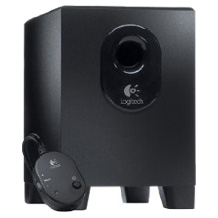
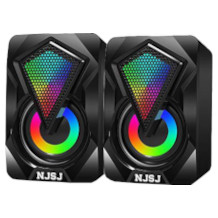
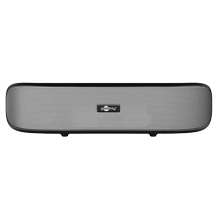

 2,502 reviews
2,502 reviews
